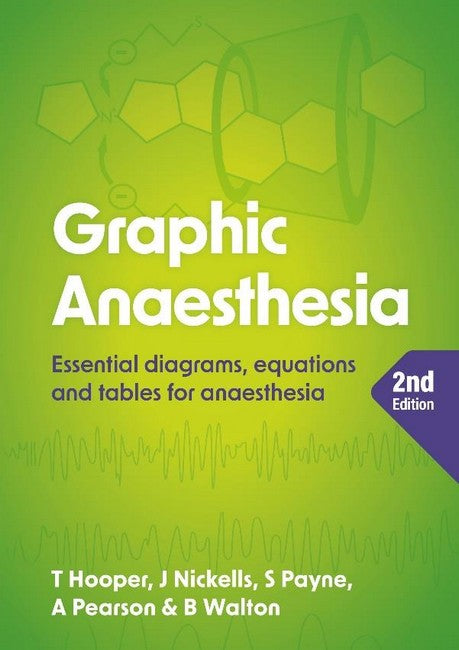1. PHYSIOLOGY 1.1 Cardiac; 1.2 Circulation; 1.3 Respiratory; 1.4 Neurology; 1.5 Renal; 1.6 Gut; 1.7 Acid-base; 1.8 Metabolic; 1.9 Endocrine; 1.10 Body fluids; 1.11 Haematology; 1.12 Cellular; 1.13 Immunity; 1.14 Muscle; 1.15 Pregnancy and paediatrics 2. ANATOMY 2.1 Functional anatomy; 2.2 Anatomy for regional anaethesia 3. PHARMACODYNAMICS AND KINETICS 3.1 Clearance; 3.2 Compartment model - one and two compartments; 3.3 Compartment model - three compartments; 3.4 Dose-response curves; 3.5 Elimination; 3.6 Elimination kinetics; 3.7 Half-lives and time constants; 3.8 Meyer-Overton hypothesis; 3.9 Target-controlled infusions; 3.10 Volume of distribution; 3.10 Wash-in curves for volatile agents 4. DRUGS 4.1 Alpha 2 receptor agonists; 4.2 Anaesthetic agents - etomidate; 4.3 Anaesthetic agents - ketamine; 4.4 Anaesthetic agents - propofol; 4.5 Anaesthetic agents - thiopentone; 4.5 Local anaesthetics - mode of action; 4.6 Antigoagulants; 4.7 Antiemetics; 4.8 Antiplatelets; 4.9 Benzodiazepines; 4.10 Blood products; 4.11 Direct acting oral anticoagulants; 4.12 Intralipid; 4.13 Local anaesthetics - mode of actin; 4.14 Local anaesthetics - properties; 4.15 Neuromuscular blockers - mode of action; 4.16 Neuromuscular blocking agents - depolarizing; 4.17 Neuromuscular blocking agents - non-depolarizing; 4.18 Opioids - mode of action; 4.19 Opioids - properties; 4.20 Paracetamol and non-steroidal anti-inflammatory drugs; 4.21 Reversal agents; 4.22 Tranexamic acid; 4.23 Volatile anaesthetic agents - mode of action; 4.24 Volatile anaesthetic agents - physiological effects; 4.25 Volatile anaesthetic agents - properties 5. PHYSICS 5.1 Avogadros hypothesis; 5.2 Beer-Lambert law; 5.3 Critical temperatures and pressure; 5.4 Diathermy; 5.5 Doppler effect; 5.6 Electrical safety; 5.7 Electricity; 5.8 Exponential function; 5.9 Ficks law of diffusion; 5.10 Gas laws - Boyles law; 5.11 Gas laws - Charles law; 5.12 Gas laws - Gay-Lussacs (Third Perfect) law; 5.13 Gas laws - ideal gas law and Daltons law; 5.14 Grahams law; 5.15 Heat; 5.16 Henrys law; 5.17 Humidity; 5.18 Laser; 5.19 Metric prefixes; 5.20 Power; 5.21 Pressure; 5.22 Raman effect; 5.23 Reflection and refraction; 5.24 SI units; 5.25 Triple point of water and phase diagram; 5.26 Types of flow; 5.27 Wave characteristics; 5.28 Wheatstone bridge; 5.29 Work 6. CLINICAL MEASUREMENT 6.1 Bourdon gauge; 6.2 Clark electrode; 6.3 Damping; 6.4 Depth of anaesthesia monitoring; 6.5 Fuel cell; 6.6 Monitoring of neuromuscular blockade; 6.7 Oximetry - paramagnetic analyser; 6.8 pH measuring system; 6.9 Pulse oximeter; 6.10 Severinghaus carbon dioxide electrode; 6.11 Temperature measurement; 6.12 Thermocouple and Seebeck effect 7. EQUIPMENT 7.1 Bag valve mask resuscitator; 7.2 Breathing circuits - circle system; 7.3 Breathing circuits - Maplesons classification; 7.4 Bronchoscope; 7.5 Cleaning and contamination; 7.6 Continuous renal replacement therapy - extracorporeal circuit; 7.7 Continuous renal replacement therapy - modes; 7.8 Gas cylinders; 7.9 Glucometer; 7.10 Humidifier; 7.11 Intra-aortic balloon pump; 7.12 Laryngoscopes; 7.13 Oxygen delivery systems - Bernoulli principle and Venturi effect; 7.14 Piped gases; 7.15 Scavenging; 7.16 Ultrasound; 7.17 Vacuum-insulated evaporator; 7.18 Vaporizer; 7.19 Ventilation - pressure-controlled; 7.20 Ventilation - volume-controlled; 7.21 Viscoelastic tests of clotting 8. STATISTICS 8.1 Mean, median and mode; 8.2 Normal distribution; 8.3 Number needed to treat; 8.4 Odds ratio; 8.5 Predictive values; 8.6 Sensitivity and specificity; 8.7 Significance tests; 8.8 Statistical variability; 8.9 Type I and type II errors 9. CLINICAL PREDICTION 9.1 ASA classification; 9.2 Clinical frailty scale; 9.3 Cormack and Lehane classification; 9.4 Mallampati classification; 9.5 Scoring systems
Request Academic Copy
Please copy the ISBN for submitting review copy form
Description
Five-star reviews: Recommended! "Great book with excellent diagrams. Very easy to understand. Missing topics such as immunity etc, but they dont lend themselves to very simple diagrams and you have to draw a line somewhere in what you choose not to include!" Amazon reviewer Hidden gem "This was recommended by a friend who has passed the exams. This book is great for summary. So what I did was I read one of the other text books on the topic and this book helps direct me to how to answer during the exams" Amazon reviewer Excellent book "Summarises key topics and shows clear pictures and graphs suitable for primary FRCA. Highly recommend and wished Id have had it earlier in the exam process." Amazon reviewer Excellent for OSCE viva "Excellent! Great diagrams to focus your Viva answers" Amazon reviewer Five Stars "Excellent book for revision." Amazon reviewer A must have book for primary FRCA "Clearly explains, with well drawn diagrams, many of the important aspects of the exam syllabus in a friendly, easy to read format." Amazon reviewer Essential revision resource! "Clear diagrams and concise text with great layout. Brings together all the different areas of the curriculum into one book, which makes it ideal for Primary FRCA revision. I particularly like the anatomy section, this is something which is hard to find in in a useful format in other books. Lots of useful comparison tables. Wish Id had it from the beginning of my revision!" Amazon reviewer

